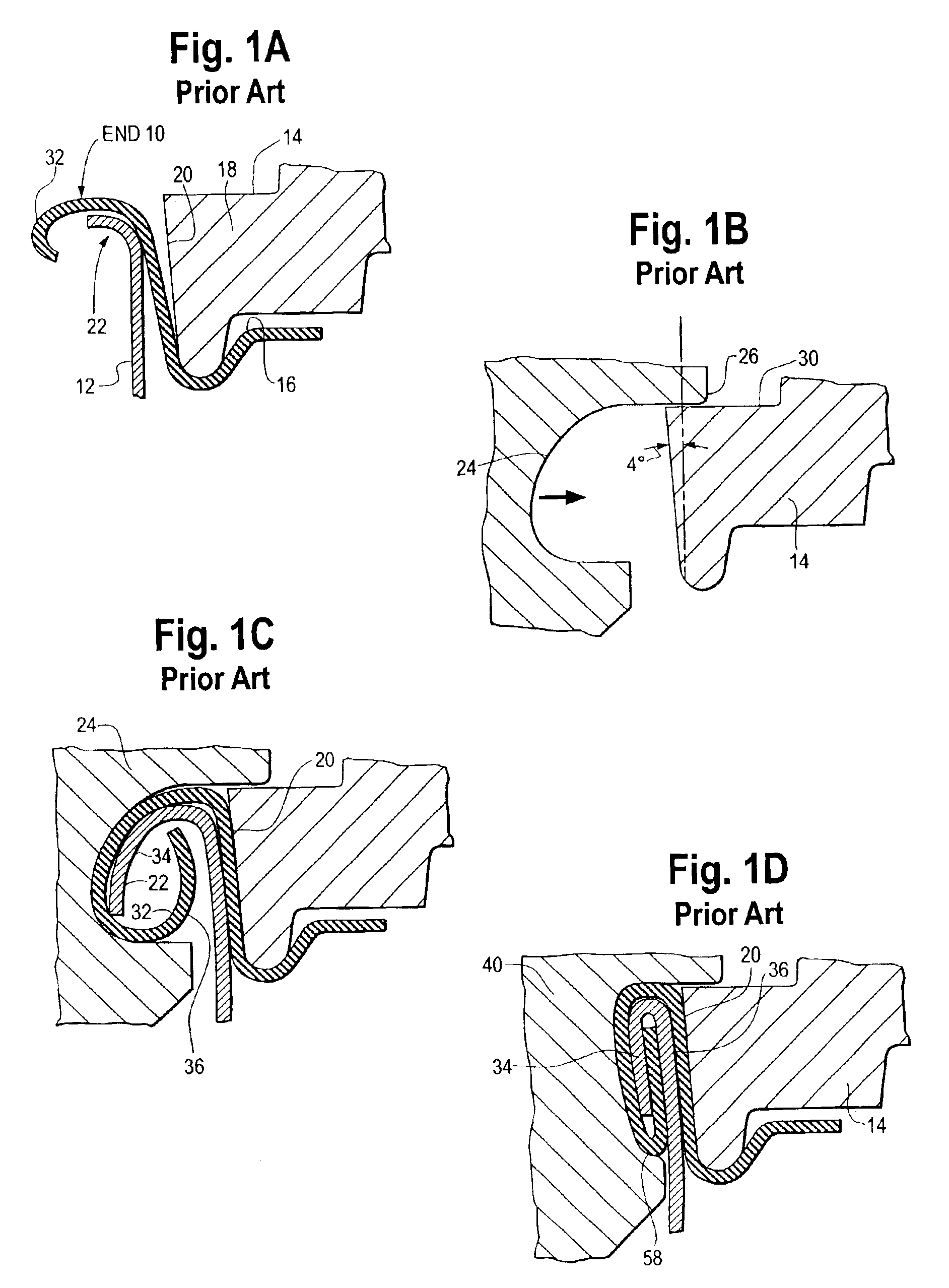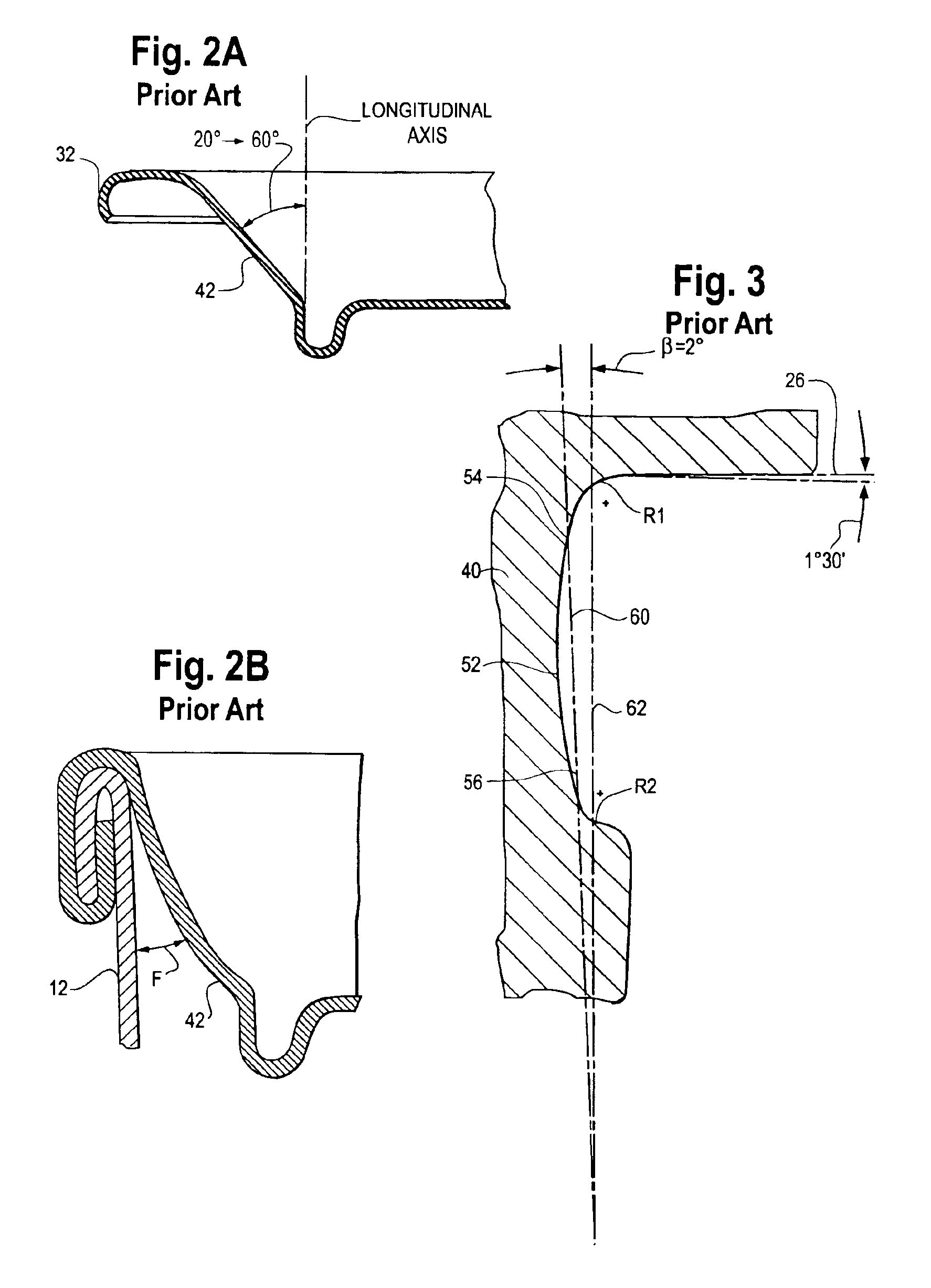Seaming apparatus and method for cans
a can and can end technology, applied in the field of can manufacturing art, can solve the problems of weak, leak-proof seal between the can body and the end, and reduce the buckle strength of the can end, so as to achieve better results, reduce buckle strength, and increase buckle strength
- Summary
- Abstract
- Description
- Claims
- Application Information
AI Technical Summary
Benefits of technology
Problems solved by technology
Method used
Image
Examples
Embodiment Construction
[0033]Improved seaming apparatus is described below which increases the buckle strength of the double seam. FIG. 4 is an illustration of the tooling used to form a second seam in accordance with one embodiment of the invention. The seaming apparatus 100 includes a seaming chuck 14 that is received by the can end 10 when the can end 10 is placed over the can body 12 to join the can body 12 and can end 10 together during the seaming operation. The chuck includes 14 an anvil portion 18 and a peripheral upper anvil wall 20. Whereas in the prior art the upper anvil wall 20 was typically inclined relative to the longitudinal axis at an angle α of 4 degrees or less, or even at a negative angle (tilted towards the longitudinal axis), in this invention it is inclined at an angle α of greater than or equal to 6 degrees. In the embodiment shown in FIG. 4, the angle α is 10 degrees.
[0034]The seaming apparatus also includes a seaming roll 40 having a seaming surface 52 for engaging the periphera...
PUM
| Property | Measurement | Unit |
|---|---|---|
| angle | aaaaa | aaaaa |
| β | aaaaa | aaaaa |
| β | aaaaa | aaaaa |
Abstract
Description
Claims
Application Information
 Login to View More
Login to View More - R&D
- Intellectual Property
- Life Sciences
- Materials
- Tech Scout
- Unparalleled Data Quality
- Higher Quality Content
- 60% Fewer Hallucinations
Browse by: Latest US Patents, China's latest patents, Technical Efficacy Thesaurus, Application Domain, Technology Topic, Popular Technical Reports.
© 2025 PatSnap. All rights reserved.Legal|Privacy policy|Modern Slavery Act Transparency Statement|Sitemap|About US| Contact US: help@patsnap.com



